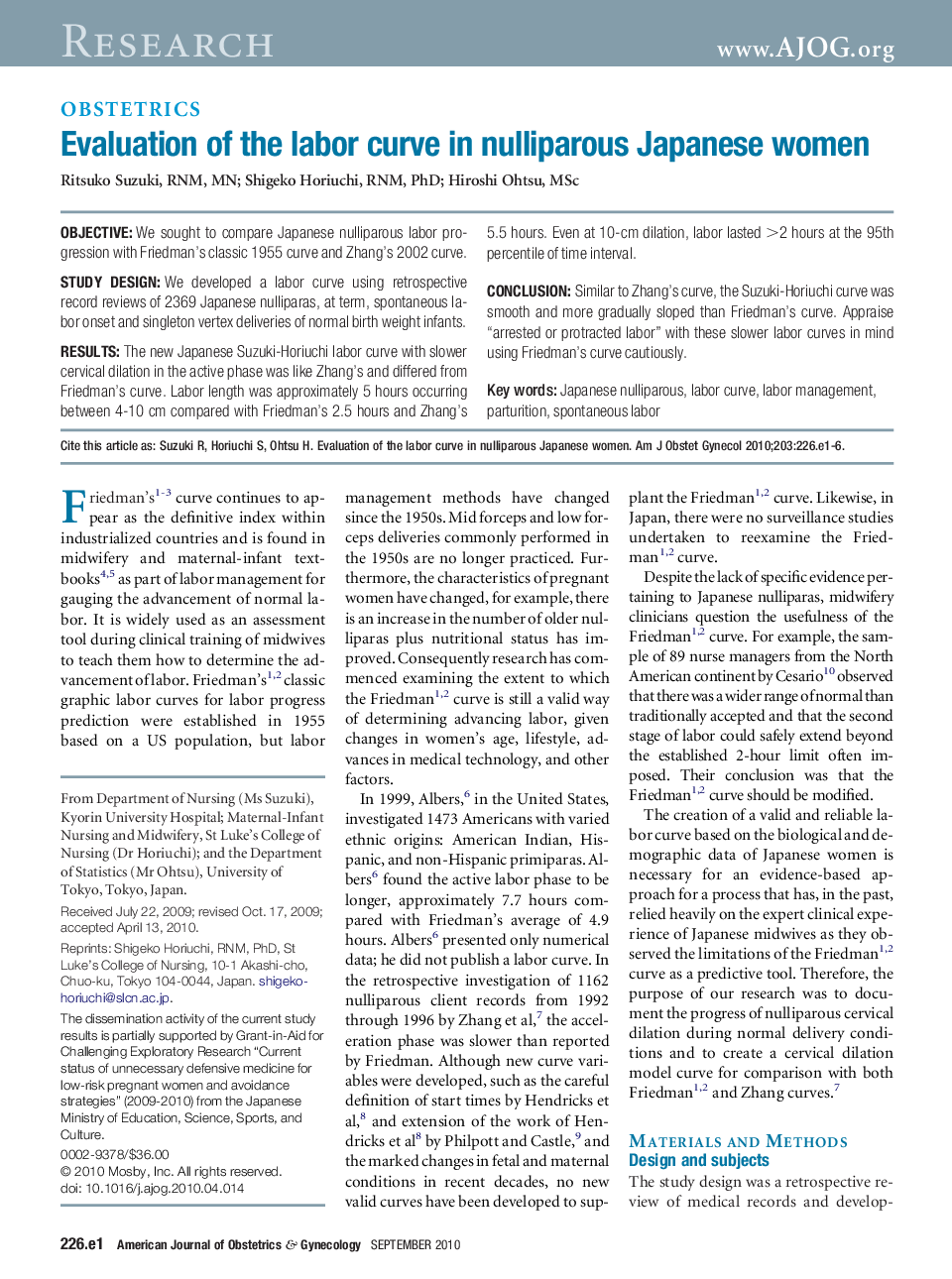| Article ID | Journal | Published Year | Pages | File Type |
|---|---|---|---|---|
| 6147164 | American Journal of Obstetrics and Gynecology | 2010 | 6 Pages |
ObjectiveWe sought to compare Japanese nulliparous labor progression with Friedman's classic 1955 curve and Zhang's 2002 curve.Study DesignWe developed a labor curve using retrospective record reviews of 2369 Japanese nulliparas, at term, spontaneous labor onset and singleton vertex deliveries of normal birth weight infants.ResultsThe new Japanese Suzuki-Horiuchi labor curve with slower cervical dilation in the active phase was like Zhang's and differed from Friedman's curve. Labor length was approximately 5 hours occurring between 4-10 cm compared with Friedman's 2.5 hours and Zhang's 5.5 hours. Even at 10-cm dilation, labor lasted >2 hours at the 95th percentile of time interval.ConclusionSimilar to Zhang's curve, the Suzuki-Horiuchi curve was smooth and more gradually sloped than Friedman's curve. Appraise “arrested or protracted labor” with these slower labor curves in mind using Friedman's curve cautiously.
